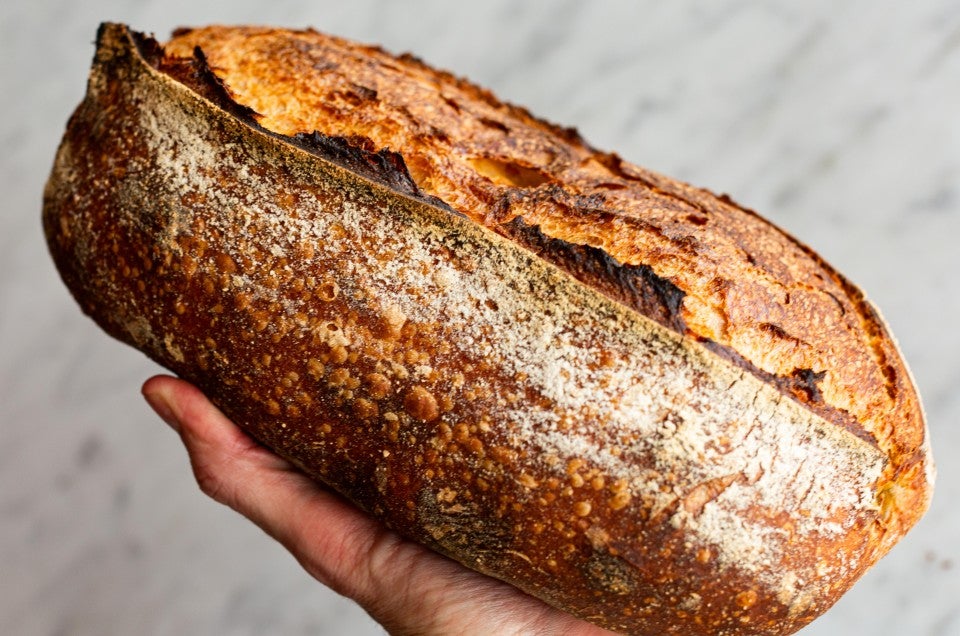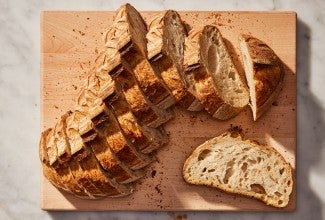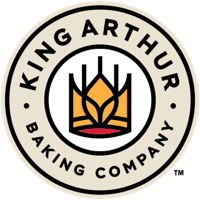Expert tips for the crispy, blistered bread crust of your dreams
Reducing flour and adding water will take you a long way.


If it is true we eat with our eyes, there are few things more appetizing than the glossy, deeply browned, blistered crust on a loaf of sourdough bread.
But making bread with a crust like this can be hard to do at home, without the benefit of the professional steam-injected ovens that bakeries use for their loaves. If you bake sourdough regularly, you probably already know about the importance of steam and the various ways you can do it in your home oven. But if your crusts still lack those crunchy blisters, our own Martin Philip has guidance on how you can get a more blistered crust on your bread.
His three essential tips:
But that’s not all you can do to ensure your loaf has a blistered crust. Martin shares more tips and tricks to achieve great crust in the video below:
Cover photo by Martin Philip.



July 24, 2024 at 6:05pm
Do you add the ice right to the covered baker or to a pan underneath the loaf? I normally bake my round loaves in a dutch oven and my sandwich loaves in square tins.
July 28, 2024 at 10:53am
In reply to Do you add the ice right to… by Alice (not verified)
Hi Alice, if you have a ceramic or stoneware pot, I wouldn't recommend adding ice or cold water to the pot (although a little hot water added to a preheated pot should be okay). However, if you're working with a preheated cast iron pot, you can place the ice directly in the Dutch oven.
With sandwich loaves that are baked in a metal pan, you'll want to add steam to the bake via a pan that's placed on the rack beneath where the loaf is baking. This is generally only necessary if you're baking your sandwich loaves at a high temperature (400°F or higher). Most often boiling water is added to a preheated cast iron frying pan to generate steam, although some bakers do use ice cubes.
June 18, 2024 at 7:59pm
How do I adjust hydration?
I live in the tropics and I can't seem to get. It right
June 19, 2024 at 9:29am
In reply to How do I adjust hydration? I… by Cheryl (not verified)
Hi Cheryl! When living in a very wet or humid area, you might consider lowering the hydration slightly to account for all the moisture already in the air. Backing out the water in the recipe by 5-10g per cup would be an acceptable way to do this but ultimately it may be a bit of trial and error depending on your exact climate, how airtight your flour is stored and if the space you are baking in is moisture controlled. Happy baking!
June 3, 2024 at 12:31am
What type of knife or method do you use to slice bread? I love the crust on mine but it is very difficult to slice through the crust.
June 3, 2024 at 2:14pm
In reply to What type of knife or method… by Laura (not verified)
Hi Laura, a sharp serrated knife, such as this one, works best for slicing bread. Always be sure to let your bread cool completely before cutting into it, as the internal crumb structure isn't fully set until the bread is cool.
May 15, 2024 at 4:23pm
I've used a covered baker on my No Knead liaves fir a while but never with the water trick! Definitely worth trying. Do you need to oil/grease the baker first? I do usually brush on a little oil before I load my dough in the baker.
May 16, 2024 at 12:22pm
In reply to I've used a covered baker on… by Valerie S (not verified)
Hi Valerie. Greasing your baker can certainly help prevent any sticking. Some bakers like to use a bit of cornmeal or semolina as well for an added crunch. Happy Baking!
June 2, 2024 at 1:08am
In reply to Hi Valerie. Greasing your… by rsalerno
I disagree with oiling the pot because you are baking your bread at a high temperature and that means you’ll start “frying” your bread or burning it before your bread is baked.
June 2, 2024 at 12:44pm
In reply to I disagree with oiling the… by Marianne Brabanski (not verified)
HI Marianne, I generally don't recommend greasing a pot that you're going to preheat empty, because it usually results in a lot of smoke. However, greasing the pot can be helpful when you plan to allow the dough to rise in the pot before baking (which is a situation where the dough is more likely to stick to the pot). When preheating the pot empty, parchment paper or a silicone loaf lifter (as illustrated in Martin's video) can be helpful for transferring the dough and preventing sticking.
Pagination